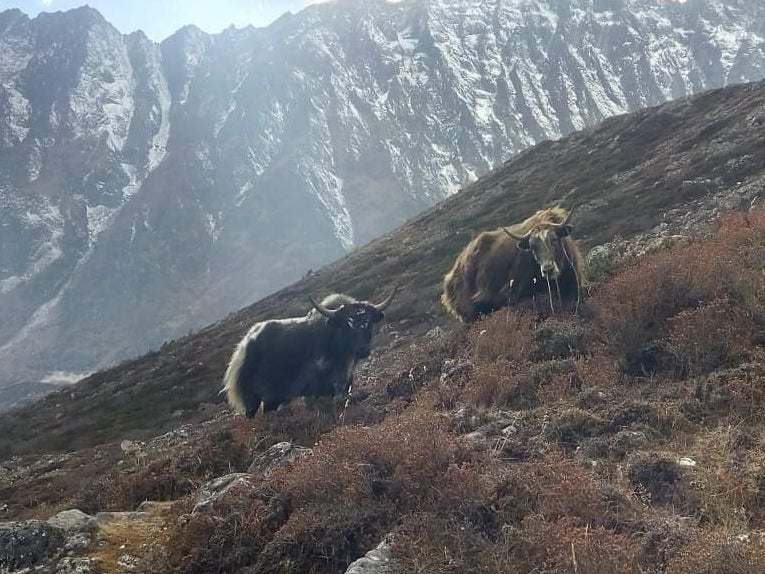Your Cart is Empty

OurWild Luxury Collection is a creative appreciation of the rawness of Himalayan landscapes and the way in which the communities that live there interact with their nature. Over centuries, ethnic groups including Sherpas, Tamang, Thakali, Rai and Limbu have settled throughout the Himalayas, thriving on a mixture of the land, adventurous visitors, and the animals they keep.
Of all those animals, the yak is by far the most iconic, living high up in the clouds away from the warmth of the earth, surviving with thick coats of beautifully soft and insulating wool. Different ethnic groups have kept yak for their milk, meat, transport, leather and wool for centuries and these almost mystical animals are interlaced with their histories and traditions. Yak can be found all over East Asia, across Nepal, Tibet, Mongolia and China, and while the animal’s success is steeped in tradition, yak wool has also found a desirable place within luxury textiles.
Yak wool has similar qualities to cashmere. It’s beautifully soft, insulating and fibres are long and lustrous. As yak rarely venture below 3000m above sea level, most of these qualities can be attributed to the yak’s favoured surroundings in such cold, high altitude climates (similar to that of the cashmere goat). However, the rarity of yak wool, in comparison to other wools, is another significant factor in its appeal within the luxury market, and numbers are only reducing.

Shrinking quantities of yak and their wool can be largely attributed to two things. Climate change and modernisation. As the weather changes and temperatures continue to rise, weathers are becoming far more extreme with warmer summers and deadly cold winters. Over the past decade communities who live and keep animals at high-altitudes, are being forced to travel to lower regions that are safer for both them and their livestock. The lower the altitude the warmer the air and partnered with much warmer summers, yak are tending to grow far less of their beautifully soft and insulating wool, as they simply don’t need it anymore.
The other factor, modernisation is significantly reducing the size of the communities who traditionally keep yak, as younger generations travel to urban areas in pursuit of a less traditional life. The practices of their past and the traditions of rearing livestock are becoming less attractive as technology opens young people up to the potentials of modern life in the city. Such migration has contributed to significant culture loss and there is a real chance that these already fragile communities may be lost to the new world.

Cultural preservation is important to us at CHACCRA and we strive to create a fusion between ancient craft, tradition and modern design. For us, yak wool is such a beautiful example of how the wonders of both the ancient and the natural world can be mindfully used to create innovative design for contemporary homes. By investing in yak wool, not only do we hope to further introduce the international market to the stunning qualities of yak wool, but we also hope to help those communities who depend on yak, continue to thrive in their ancestral homes.
Comments will be approved before showing up.


